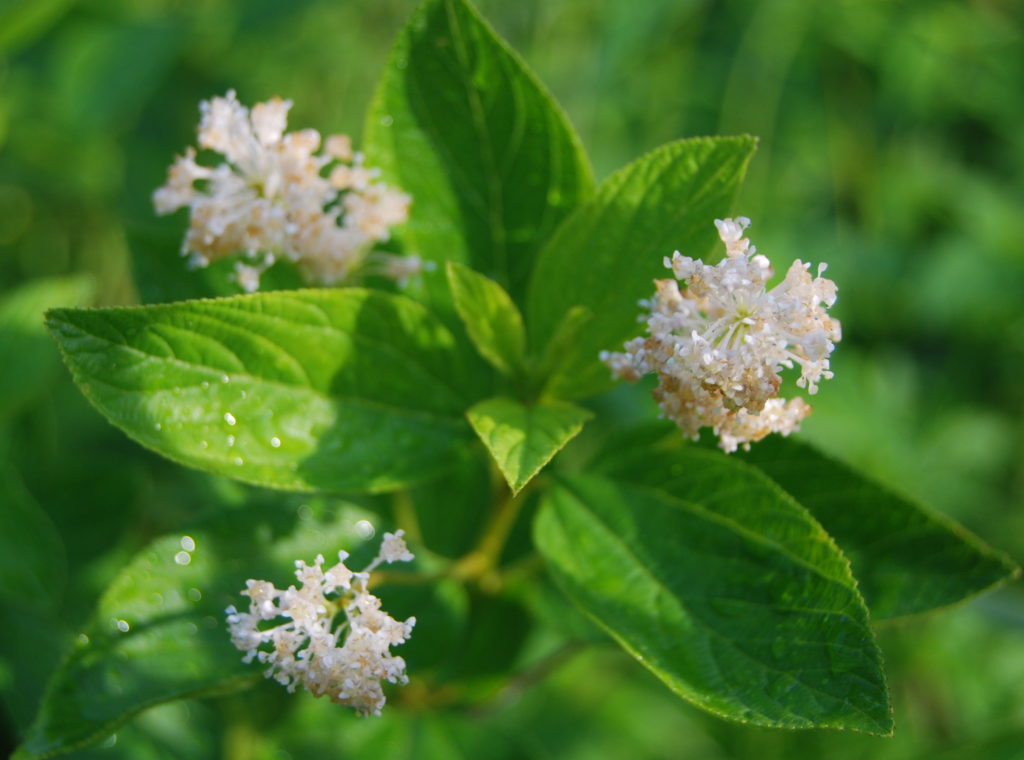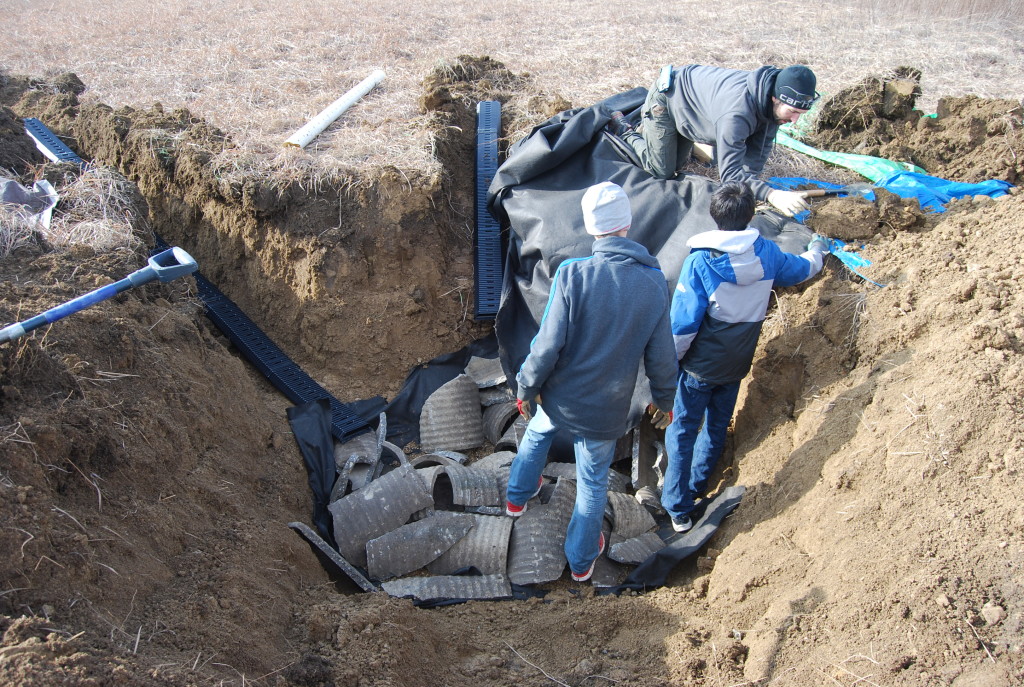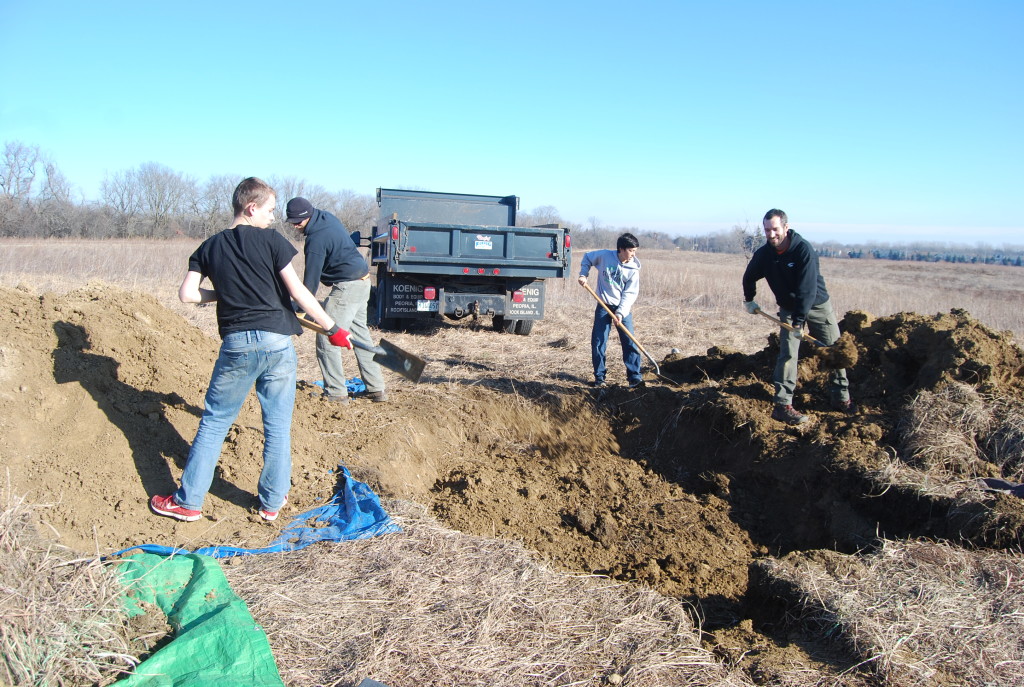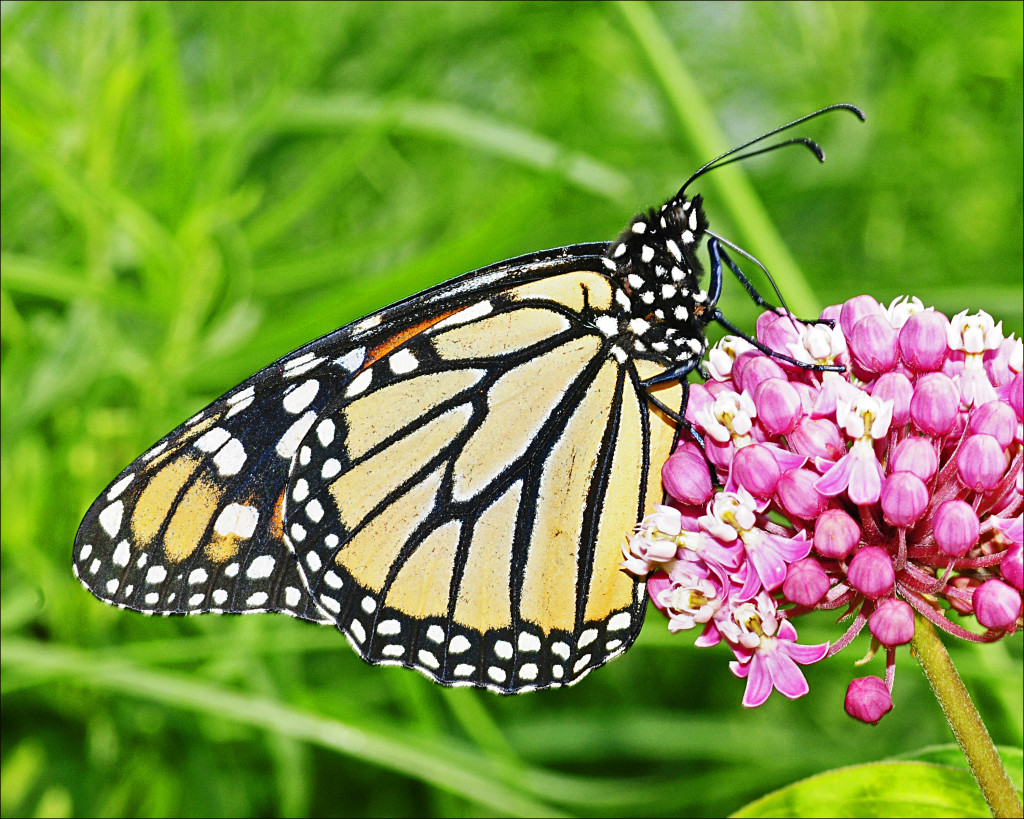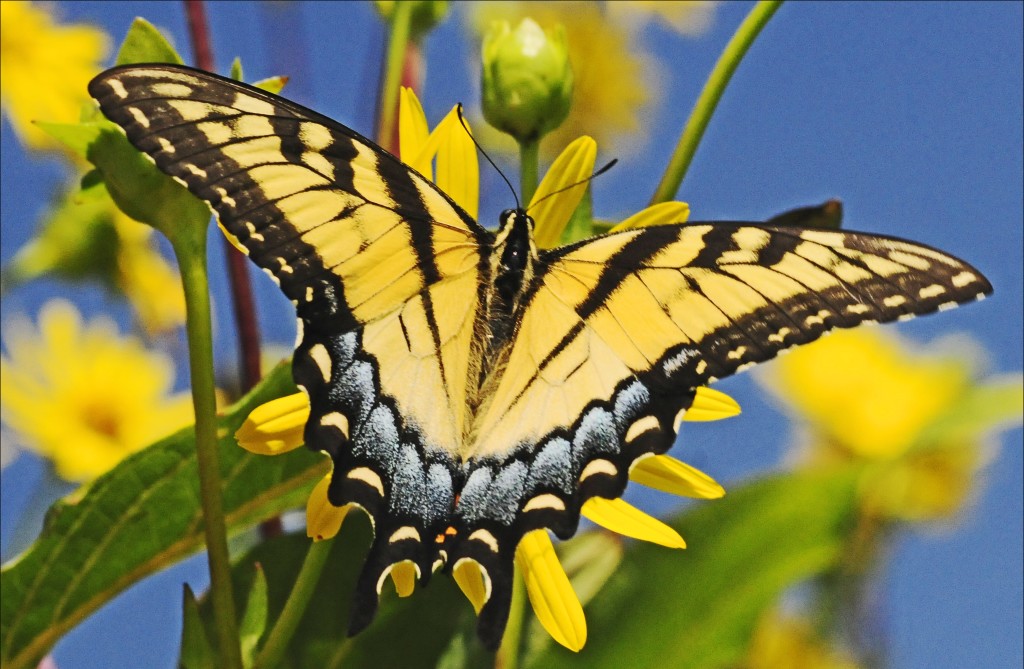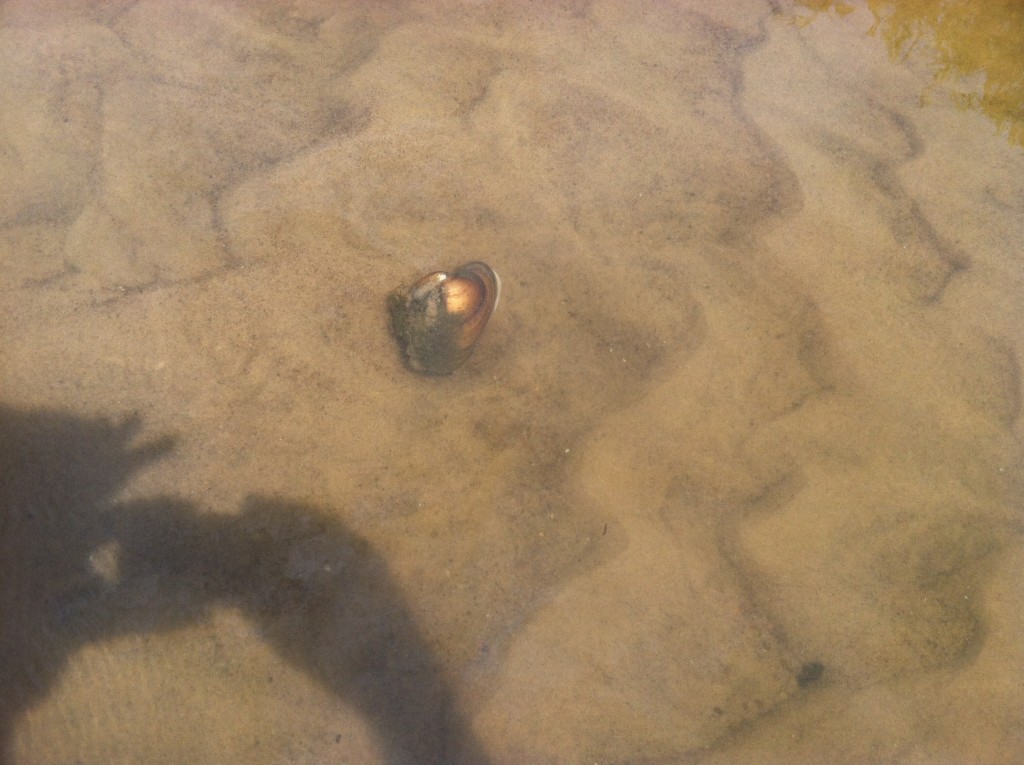Five or six years ago, I planted two New Jersey Tea shrubs in two separate areas of our yard devoted to indigenous prairie, savanna, and woodland plants. By adding New Jersey Tea (Ceanothus americanus) I hoped to add even more diversity to the plantings we already had.
New Jersey Tea isn’t one of the more well recognized native plants of the Midwest today. Early settlers knew it, however, and knew that its leaves could be used for making tea. This tea was particulary popular during the Revolutionary War as an alternative to those teas being imported into the colonies.
The challenge in using this relatively low-growing shrub in the home landscape is that rabbits love to eat it. “Love” is an understatement. One of the two disappeared within a year of being planted and was never seen again, presumably lost to the horde of hares in our neighborhood.
After a year in which it had bloomed, the remaining New Jersey Tea appeared to have met the same fate as the first as I couldn’t find it the following spring. When it reappeared last year in the midst of the other native flowers and grasses, I protected it with wire mesh fencing. But when I couldn’t find it this spring in a cursory look, I came to the conclusion that, despite my efforts, it had not survived. The temptation to devise elaborate and deadly schemes for dealing once and for all with the rabbits of the area was very strong.
But lo and behold, this past weekend as I did some weeding in the area I noticed unusual flowers and decided to look closer. Sure enough – the New Jersey Tea was blooming modestly as you can see in the photo below. (Lest you think I was completely daft in not being able to see such an obvious plant before, I should mention that I took this photo very close up. The leaves and blooms are actually fairly small and unobtrusive.)
Have you considered replacing portions of the lawn of your yard or your church’s land with indigenous plants? There are many options in how you do so, from creating carefully designed beds to more natural sections of habitat.
It’s worth the effort. Doing so honors our Creator God. It is a life-affirming action that says something authentically and counterculturally Christian about your values and your church’s values.
Having native plants around your home and church also offer the chance to observe the varied and complex relationships between different elements of Creation. New Jersey Tea, for example, is not just a delectable source of sustenance for rabbits. It fixes life-giving nitrogen in the soil, and its small, white, fragrant flowers are of value to butterflies and a variety of other small pollinators. And where you have small creatures you tend to have the occasional larger creature that feeds on them. In this case, the “larger” creature is the hummingbird.
Yes, those tiny and graceful ornithological wonders we typically see sipping on the nectar of flowers and the sweetened water of feeders are also completely ready to scarf up protein packages in the form of tiny bees, wasps, flies, and beetles.
I’m looking forward to the day when my family and I will see a hummingbird doing just that. If only the hummingbirds could do something about the rabbits…
To see better photos of more mature New Jersey Tea shrubs and to learn more about this beautiful plant, especially the many pollinators that draw sustenance from it, check this useful website out.

